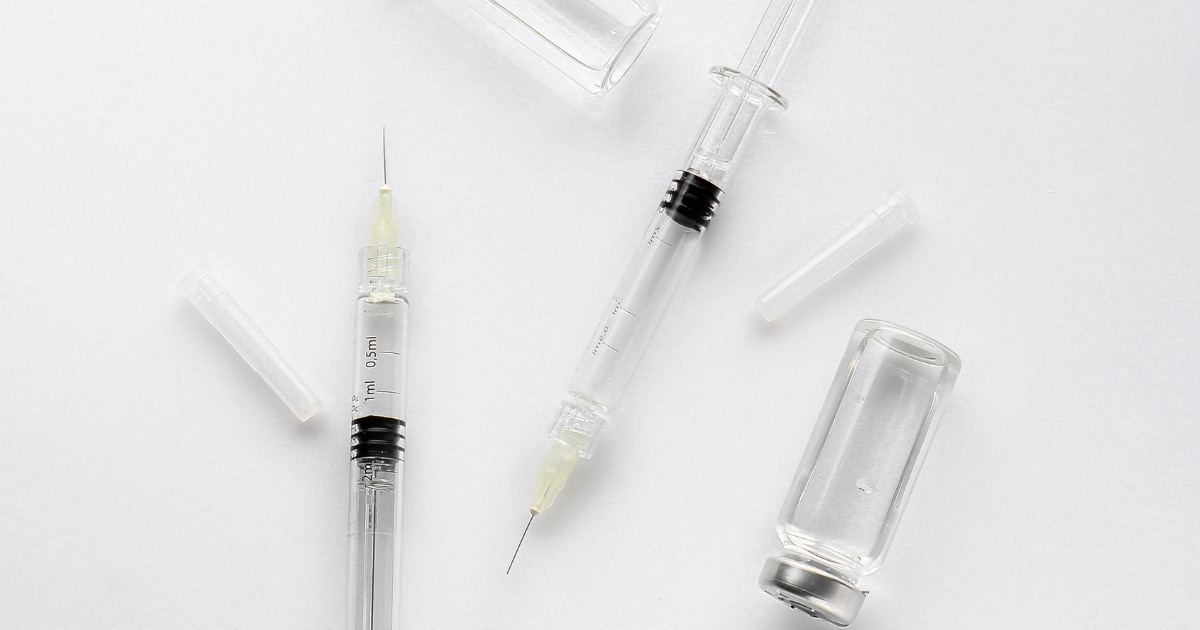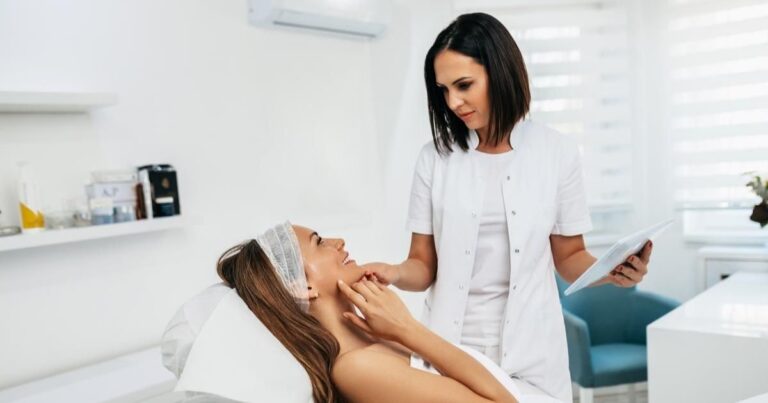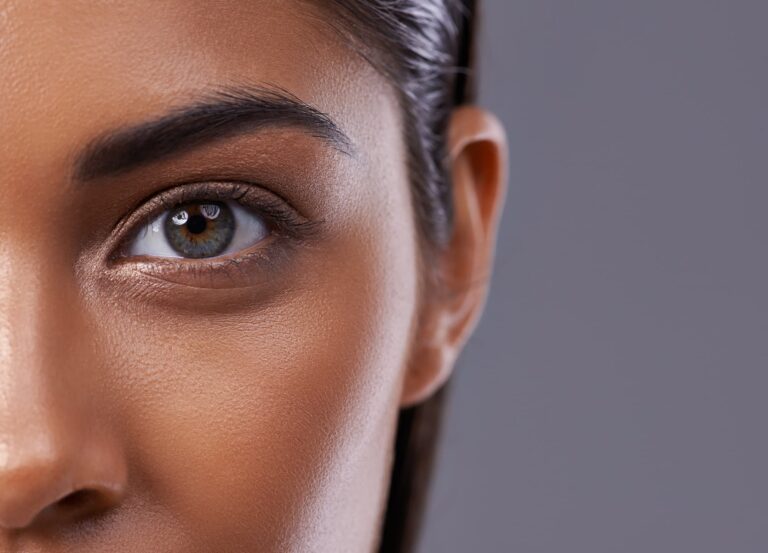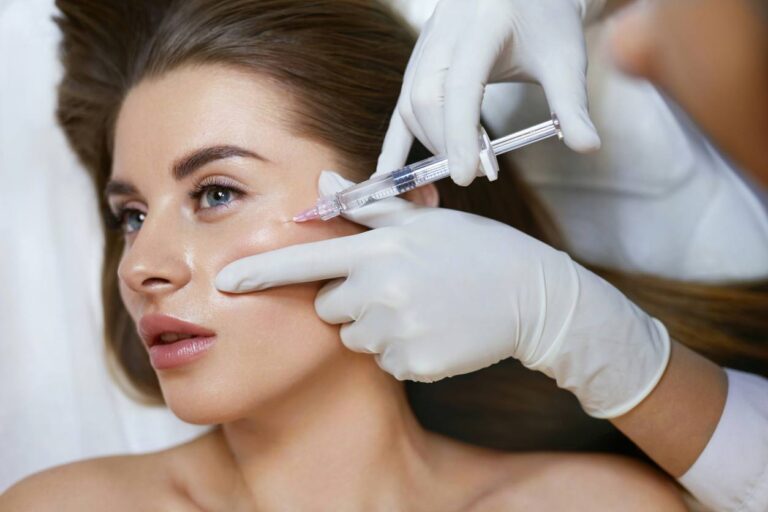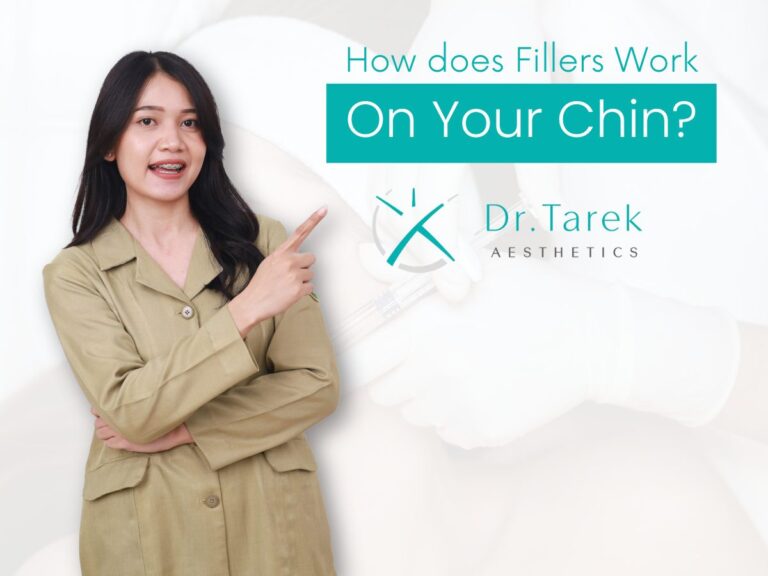Unlock the secret to a youthful appearance with fillers with hyaluronic acid. These injectable treatments smooth wrinkles and restore facial contours, offering a safe and customisable beauty enhancement. With immediate results and minimal downtime, hyaluronic acid fillers are the cornerstone of modern aesthetic medicine.
How Long Do Fillers With Hyaluronic Acid Typically Last?
Hyaluronic acid fillers are renowned for their durability, but their longevity can vary depending on several factors. Most patients find that the effects of the best fillers in Dubai last six months to a year before a follow-up treatment is necessary.
| Factor | Effect on Longevity | Average Duration |
| Individual Metabolism | High metabolism shortens the duration | 6-12 months |
| Filler Viscosity | Thicker fillers last longer | 12-18 months |
| Treatment Area | Fewer movement areas last longer | 9-12 months |
| Quality of Product | Higher quality lasts longer | 12-18 months |
| Lifestyle Factors | An active lifestyle may shorten the duration | 6-9 months |
| Injection Technique | Skilled techniques can extend the duration | 12+ months |
| Maintenance Treatments | Regular sessions prolong the effects | Ongoing |
The table provides a general overview of the factors affecting the longevity of hyaluronic acid fillers and their typical effects on the duration before a follow-up treatment might be required. Please note that these are estimated durations, and individual experiences can differ. Patients need to set realistic expectations and plan for maintenance based on their unique circumstances.
Are There Any Side Effects Associated With Fillers With Hyaluronic Acid?
While hyaluronic acid fillers are generally safe, potential side effects range from temporary to more serious, and patients should be aware before undergoing treatment.
Book A Consultation With Dr Tarek Bayazid
Top-rated Plastic Surgeon For Fillers in Dubai
Installment Plan Available
- Injection Site Reactions: Redness, swelling, and bruising are common but typically subside quickly.
- Allergic Reactions: Though rare, some individuals may experience allergic reactions to the filler material.
- Lumps and Irregularities: Improperly injected fillers can lead to bumps or asymmetry.
- Infection Risk: As with any injection, there is a small risk of infection.
- Tissue Damage: Incorrectly administered fillers can affect blood flow to the tissue, causing damage.
- Overcorrection: An excess amount of filler can result in an unnatural appearance.
- Reversibility: In the case of undesired effects, hyaluronic acid fillers can often be dissolved with an enzyme called hyaluronidase.
What Are the Benefits of Using Hyaluronic Acid Fillers Over Other Types?
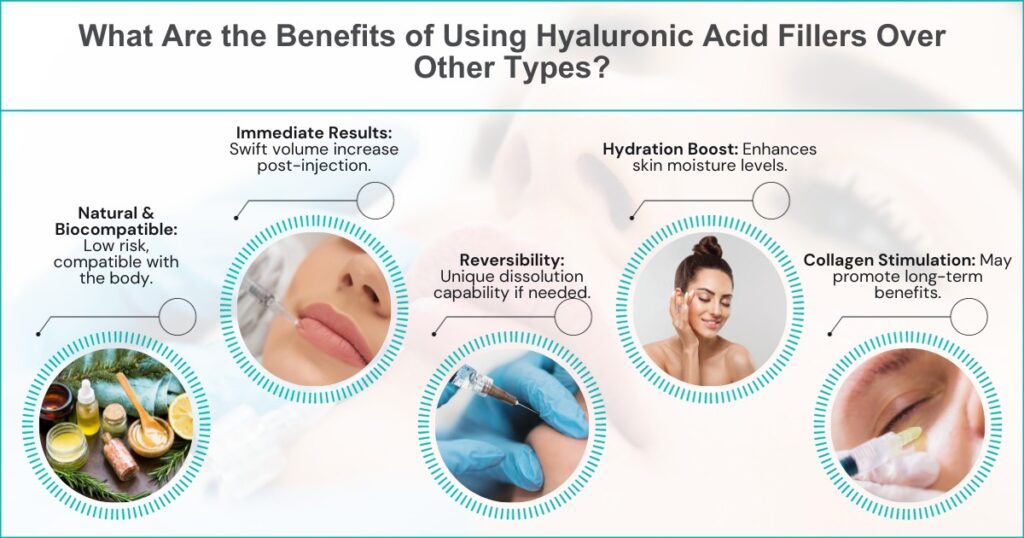
Hyaluronic acid fillers offer distinct advantages due to their compatibility with the human body and reversible nature.
| Benefit | Description | Other Fillers Compared |
| Natural Substance | Less risk of adverse reactions | More biocompatible |
| Immediate Results | Visible volume increase after injection | Faster results |
| Reversible | Can be dissolved if desired | Unique to hyaluronic acid |
| Hydration | Enhances skin hydration | Dual-action |
| Collagen Stimulation | It may help stimulate collagen production | Long-term benefits |
| Fine-Tuning | Adjustments possible over time | Customisable |
| FDA Approval | Many fillers are FDA-approved | Regulated for safety |
This table compares the benefits of hyaluronic acid fillers with other types of fillers, highlighting features like natural composition, immediate results, and FDA approval status, showcasing why they are a preferred choice for many.
Can Hyaluronic Acid Fillers Be Reversed or Corrected?
One of the critical advantages of hyaluronic acid fillers is their reversibility, offering patients peace of mind with their cosmetic decisions.
- Hyaluronidase Use: This enzyme can dissolve hyaluronic acid fillers quickly and safely.
- Adjustable Treatments: Fillers can be adjusted to correct asymmetries or overfilling.
- Non-Permanent: Patients can return to their pre-treatment appearance if desired.
- Minimally Invasive: The correction process is straightforward and usually does not require significant downtime.
- Immediate Correction: Results from reversal treatments are typically seen almost immediately.
- Control Over Results: Patients can opt for a gradual reversal to fine-tune their appearance.
- Safety Profile: The reversal process is generally well-tolerated with a low risk of complications.
What Should You Expect During a Hyaluronic Acid Filler Procedure?
A hyaluronic acid filler procedure is a minimally invasive treatment, generally completed within 30 minutes to an hour, with immediate results and minimal downtime.
| Step | Description | Timeframe |
| Consultation | Discuss goals and assess suitability | Varies |
| Preparation | Clean the area, and apply numbing cream if needed | 10-20 minutes |
| Injection | Filler is injected into targeted areas | 15-60 minutes |
| Massage | The area is massaged to shape the filler | 5-10 minutes |
| Initial Assessment | Provider checks for symmetry and results | 10-15 minutes |
| Post-Procedure Advice | Aftercare instructions are given | 5-10 minutes |
| Follow-Up | Schedule the next appointment or check-up | Varies |
The table outlines the key steps and related estimated timeframes of a typical hyaluronic acid filler procedure. The timelines provided in the table are within the general ballpark for many hyaluronic acid filler procedures, but they can vary depending on multiple factors, such as the clinic’s protocol, the patient’s specific needs, and the complexity of the procedure.
Are Hyaluronic Acid Fillers Suitable for All Skin Types?
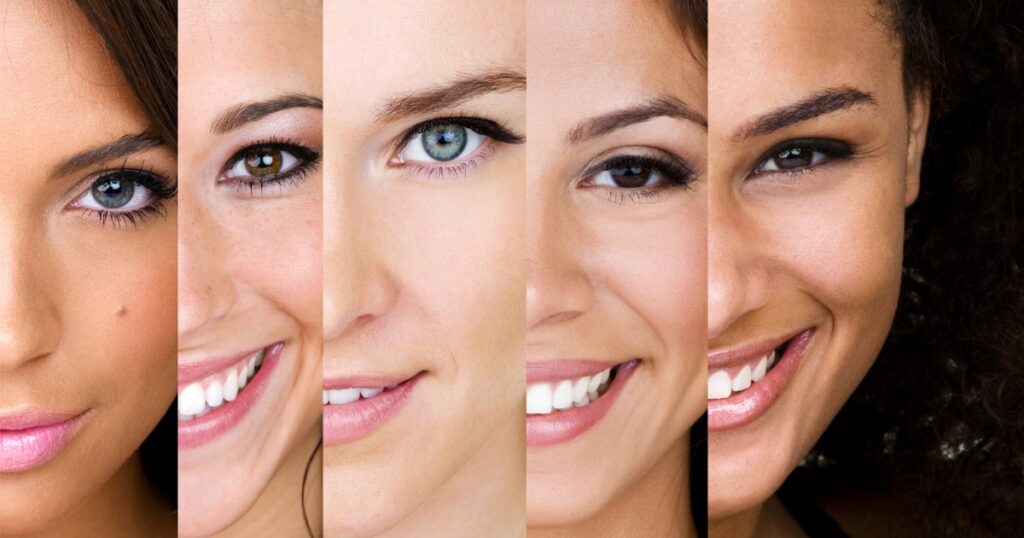
Hyaluronic acid fillers are remarkably versatile and are suitable for most skin types, but individual assessments are crucial to determining the best treatment plan.
- Broad Compatibility: They are well-tolerated by most skin types, including sensitive skin.
- Customisable Treatment: Formulations can be tailored to suit different skin textures and concerns.
- Skin Test Unnecessary: Unlike some fillers, a prior skin test is generally not required.
- Age-Related Suitability: Effective for various age groups, addressing fine lines and deeper wrinkles.
- Ethnic Skin Considerations: They are widely used across different ethnicities with a low risk of hyperpigmentation.
- Holistic Approach: Providers may combine fillers with other treatments to accommodate specific skin needs.
- Allergy Considerations: Rarely, individuals with specific allergies may need to discuss alternatives with their provider.
How Does the Body Naturally React to Hyaluronic Acid Fillers?
The body’s reaction to hyaluronic acid fillers is typically favourable, considering hyaluronic acid’s compatibility with the body’s tissues.
| Reaction | Description | Timeframe |
| Initial Swelling | Typical immediate response to injection | 1-2 days |
| Bruising | This is possible due to needle entry, which varies per individual | 1-7 days |
| Integration | Filler integrates with natural skin tissues | 1-2 weeks |
| Metabolisation | Natural breakdown of filler by the body | 6-18 months |
| Collagen Stimulation | Potential positive side effects | Long-term |
| Immune Response | Rarely, an immune reaction may occur | Immediate to long-term |
The table illustrates the typical reactions of the body to hyaluronic acid fillers, ranging from rapid swelling to the long-term potential for collagen stimulation, providing an understanding of the natural integration process.
What Are the Most Common Areas Treated With Hyaluronic Acid Fillers?
Hyaluronic acid fillers frequently enhance and restore volume in several key face areas for a rejuvenated appearance.
- Lips: Enhances lip volume and defines the shape, often used for lip augmentation.
- Cheeks: Restores lost volume and enhances cheek contours for a youthful look.
- Nasolabial Folds: Reduces the appearance of deep lines from the nose to the corners of the mouth.
- Marionette Lines: Softens lines around the mouth, lifting the lower face.
- Tear Troughs: Improves under-eye hollows and reduces dark circles for a refreshed appearance.
- Jawline: Refines and strengthens the jawline, enhancing facial symmetry.
- Nose: Non-surgical nose reshaping, often called a ‘liquid rhinoplasty’.
How to Choose a Qualified Provider for Hyaluronic Acid Filler Injections?

Selecting a skilled and experienced provider is critical for ensuring safe and aesthetically pleasing hyaluronic acid filler treatments. Here are some things you need to look into before selecting your provider:
- Board Certification: Look for a provider board-certified in dermatology or plastic surgery.
- Experience with Fillers: Providers should have extensive experience with filler injections.
- Before and After Gallery: A reputable practitioner will have a portfolio of their work to demonstrate results.
- Patient Reviews: Reading reviews can provide insight into patient satisfaction and experience.
- Consultation Process: A thorough consultation should discuss goals and potential risks.
- Professional Setting: Treatments should be performed in a clean, professional medical setting.
- Follow-Up Care: The provider should offer follow-up care to ensure optimal results and handle any complications.
What Precautions Should Be Taken Before Getting Hyaluronic Acid Fillers?
To maximise results and minimise risks, patients should follow specific guidelines before undergoing hyaluronic acid filler treatments. These may include:
- Avoid Blood Thinners: Medications and supplements that thin the blood should be avoided to reduce bruising.
- No Alcohol Consumption: Alcohol can increase swelling and should be avoided before the procedure.
- Clear Medical History: Discuss any medical conditions or allergies with the provider.
- Skin Care: Avoiding harsh skincare treatments or products before the procedure is recommended.
- Sun Exposure: Minimising sun exposure before treatment can help reduce the risk of complications.
- Dietary Considerations: Some providers recommend avoiding certain foods that may increase bruising or swelling.
- Understanding the potential outcomes and limitations of the treatment is essential.
Can You Combine Hyaluronic Acid Fillers With Other Cosmetic Treatments?
Hyaluronic acid fillers can often be combined with other cosmetic procedures for comprehensive facial rejuvenation with the guidance of a skilled professional.
- Combination with Botox: Fillers and neuromodulators like Botox can address static and dynamic wrinkles.
- Laser Treatments: Some laser treatments can be safely performed with fillers for enhanced skin texture.
- Chemical Peels: When timed appropriately, chemical peels can complement the rejuvenating effects of fillers.
- Skincare Regimens: A tailored skincare regimen can maintain and enhance the effects of filler treatments.
- Microneedling: This procedure can often be paired with fillers to improve skin texture and scarring.
- Safety First: It’s essential to schedule treatments appropriately to avoid interactions and allow for healing.
- Professional Guidance: Aesthetic treatment plans should be developed by a licensed provider for safety and effectiveness.
How to Care for Your Skin After Receiving Hyaluronic Acid Fillers?
Aftercare is essential to optimise healing and maintain the effects of hyaluronic acid fillers post-treatment.
- Avoid Strenuous Exercise: High-intensity activities should be avoided for at least 24 hours post-injection.
- Sun Protection: Use a high-SPF sunscreen and avoid direct sun exposure to prevent swelling and bruising.
- Gentle Skincare: Use mild products and avoid exfoliating agents immediately after treatment.
- Avoid Heat Exposure: Saunas, hot tubs and hot showers should be avoided for the first few days.
- Stay Hydrated: Drinking plenty of water helps maintain the filler’s hydrating effect.
- No Pressure: Avoid putting pressure on the treated areas to prevent filler displacement.
- Follow-Up: Attend any recommended follow-up appointments to assess the need for additional treatments.
Fillers with hyaluronic acid stand out as a reliable option for those seeking to rejuvenate their looks with confidence. They deliver subtle yet impactful results, ensuring your skin retains its natural charm. Whether you want to diminish fine lines or enhance facial volume, hyaluronic acid fillers could be your key to unlocking enduring beauty.
Dr Tarek Bayazid, renowned for advanced facial rejuvenation and body contouring, delivers natural results with the latest techniques. His meticulous work in Dubai reflects medical expertise, artistic skill, and a commitment to patient satisfaction.
To get a taste of aesthetic artistry, book a consultation with Dr Tarek Bayazid today!
